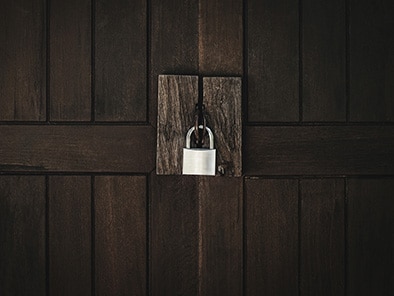Article summary
Creative problem solving. Collaboration and communication. Working calmly under pressure. These are traits that can make for a good developer or just a good coworker in general.
They also happen to be excellent qualities for breaking out of an escape room!
What’s an Escape Room?
An escape room is essentially a series of logic puzzles with various physical and electronic components staged inside a themed room. If your group successfully solves all these puzzles inside the allotted time, you “escape” from the room.
While commercial escape rooms have become common, it’s not too difficult to design and run your very own escape room. It’s fairly easy to search the internet for DIY puzzle ideas, and you can create some great experiences with very low-tech solutions, such as crosswords and combination locks. But the puzzles themselves are not what makes an escape room tick.
A custom escape room works great as part of an internal conference, a quarterly party, or just a fun lunchtime break from work. In this post, I’m going to lay out some strategies for developing a custom escape room, as well as some reasons why you should consider running one at work. In my next post, I’ll share detailed instructions for a developer-specific escape room that I’ve iterated on and had success with at a few different companies.
High-Level Strategy
At a fundamental level, you want an escape room to engage everyone in the group. Groups can vary in size and skill level, so it’s important to include multiple puzzles that can be worked on independently. It’s fine for an individual puzzle to be solvable by a single person, but ideally, you want puzzles to be easier or faster to solve when multiple people are working together. Nobody wants to feel left out or useless when trying to solve an escape room.
Pattern recognition and matching items are one way to achieve this. Objects that must be physically manipulated and are either far apart or too large/numerous for one person to handle efficiently are another. Physically hiding items so that people have to search for them is another common strategy. However, remember that a puzzle that needs a lot of people to solve can also pose a problem, since you can end up with a too-many-cooks situation.
In a successful escape room, your group will be working toward a goal with achievable steps along the way. Escape rooms are always racing against a clock, so it’s important that groups can feel a sense of progress and see an end goal in sight. Generally, this is accomplished by making some puzzles impossible to solve until others are finished, usually by unlocking a key (literally or metaphorically). If you can have two independently solved puzzles come together to provide the clue or key for the next set of puzzles, then you’ll have an engaged group with a clear goal and the building blocks for a successful escape room.
Lastly, you need to provide enough context. In my experience designing custom escape rooms, the hardest part is figuring out how much information to provide to solve a puzzle. It’s incredibly difficult for a puzzle designer to gauge how difficult it will be for others to solve the puzzle, so err on the side of too much information. You can always adjust if groups are solving things too quickly.
To recap, for a successful escape room you need:
- Puzzles that are designed to be worked on simultaneously by multiple people
- A goal that involves completing some puzzles before others can be solved
- Enough context about the puzzles that the group can solve them in a reasonable amount of time
Software Team Building
It’s easy to see why an escape room would be fun among a group of friends, but why would you try to run one at work? In general, these activities can provide a very positive team-building experience. For teams of software developers, however, there is an added layer of relevancy. Let’s take a look back at the keys for a successful escape room I summarized above, but replace the word “puzzles” with the word “stories”:
- Stories that are designed to be worked on simultaneously by multiple people
- A goal that involves completing some stories before others can be solved
- Enough context about the stories that the group can solve them in a reasonable amount of time
Now, instead of an escape room, you’re talking about an Agile software project! At Atomic Object, whenever we work through a backlog, create features, and ship an application, we’re essentially solving a client’s escape room.
Those traits I mentioned above (creative problem solving, communication, and working under pressure) are as essential to delivering great software as they are to solving a well-designed escape room. Experiencing that kind of challenge in an environment with coworkers, one where there aren’t any real stakes or relation to your actual work, can be a great way to build trust and camaraderie with your colleagues.
It also provides a new mindset to approach your actual work. When I get stuck or frustrated by a complex problem, one strategy I use now is to imagine that it’s just another escape room puzzle. The reduction in anxiety I get from reframing problems this way and the opportunity to feel as though I’m playing at work has been a wonderful discovery.
Now read Part 2 where I give you all the details of my personal programming escape room.

